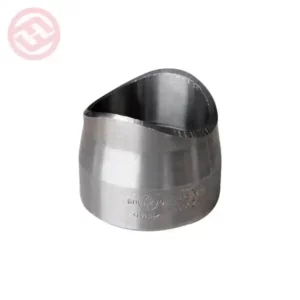Selecting the appropriate wall thickness of a welded outlet (sometimes referred to as a weldolet) involves several considerations to ensure the structural integrity and performance of the piping system.
Here are the key factors to consider:
- Operating Conditions: The wall thickness should be selected based on the operating conditions of the piping system, including the temperature, pressure, and type of fluid or gas being conveyed. Higher pressure and temperature requirements generally necessitate thicker walls to withstand the stresses and prevent failure.
- Material Compatibility: The wall thickness should be compatible with the material of the welded outlet and the parent pipe. Ensure that the selected material can withstand corrosion, erosion, and other environmental factors present in the operating environment.
- Code and Standards Compliance: Compliance with applicable codes and standards, such as those set by organizations like the American Society of Mechanical Engineers (ASME) or the American Petroleum Institute (API), is essential. These codes provide guidelines for determining minimum wall thickness requirements based on factors like design pressure, temperature, and material properties.
- Welding Considerations: Considerations related to welding, such as weld joint preparation, welding procedure specifications (WPS), and welder qualifications, can influence the selection of wall thickness. Thicker walls may require different welding techniques or procedures to ensure proper fusion and integrity of the weld joint.
- Stress Analysis: Conduct stress analysis calculations to assess the stresses and loads acting on the welded outlet under various operating conditions. This analysis helps determine the required wall thickness to prevent overstressing and ensure structural integrity.
- Expansion and Contraction: Consider the potential for thermal expansion and contraction of the piping system, especially in high-temperature applications. Thicker walls may be necessary to accommodate thermal expansion without exceeding allowable stresses or causing deformation.
- Service Life and Maintenance: Evaluate the expected service life of the piping system and any maintenance or inspection requirements. Thicker walls may offer increased durability and longevity, reducing the likelihood of premature failure and minimizing the need for frequent maintenance.
- Cost Considerations: Balance the benefits of thicker walls, such as improved strength and reliability, with the associated costs of material procurement, fabrication, and installation. Optimize the wall thickness to meet performance requirements while minimizing overall project expenses.
- Manufacturer Recommendations: Consult with the manufacturer of the welded outlet or piping components for specific recommendations regarding wall thickness selection based on their product specifications and performance characteristics.
By considering these factors comprehensively, you can select the appropriate wall thickness of a welded outlet to meet the functional, structural, and regulatory requirements of the piping system.
